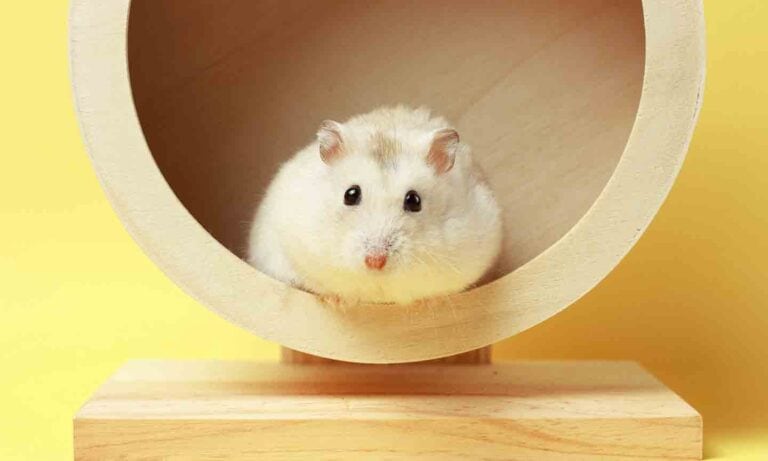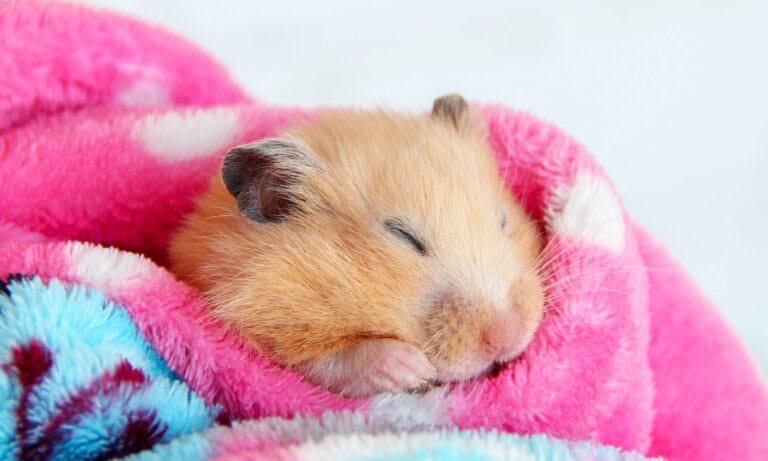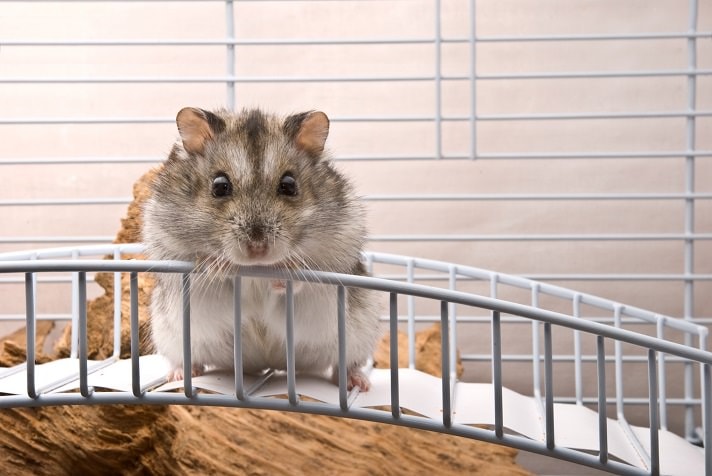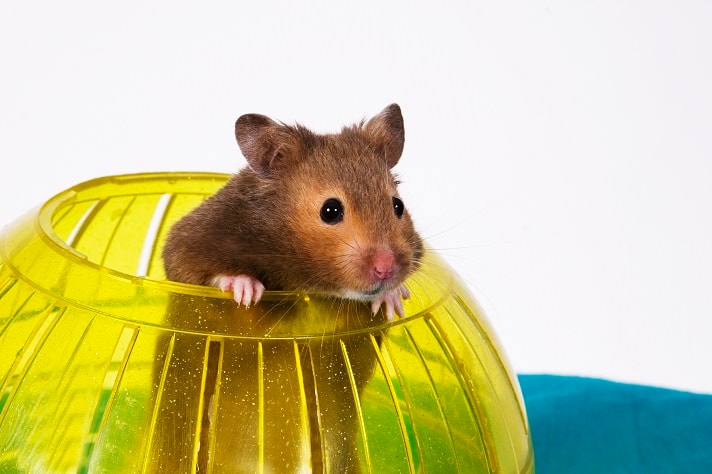Q.
I recently got a hamster and have been reading about how to take care of the naughty boy. I have a few questions that I couldn’t find answers for, so I hope you may be able to address them.
1. What’s the ideal room temperature for the hamster? Do they get cold or hot easily? I have a small dorm room with air-conditioning, and I’m afraid he may get cold at night.
2. Since hamsters are crepuscular, do I have to leave some light on at night when I go to sleep or when I’m not in my room so that he can see and move around in his hamster cage easily?
A.
Like many animals, a hamster’s ability to adjust to temperature isn’t as effective as our own. A Syrian hamster in the wild often endures frigid temperatures foraging for food in the desert night, while by day the ground bakes in the unrelenting sun. Its underground home serves as its refuge, but it must rely more upon external temperature controls than internal.
The temperature that’s most comfortable for a hamster, whether Syrian or one of the dwarf hamster species, is quite close to that for humans. They prefer the range between 68 and 72 degrees Fahrenheit (about 20 to 22 degrees Celsius) and can bear it a bit higher or lower very easily. There are two important caveats.
First, they can deal with lower temperatures by manipulating their physical environment. We always advise giving hamsters a small, clean, well-ventilated hide-out, such as a cardboard box (large milk and juice cartons work well for this — just be sure they’re thoroughly cleaned, and cut open lots of doors and windows). This “home” serves many functions, foremost, giving the very territorial resident its own territory, which puts it at ease and allows it to adapt more readily to outside stimuli.
Provide safe, dust-free nesting material, such as torn, unscented toilet paper (tip: the less expensive, somewhat rougher brands tend to be more dust-free). You’ll see over time that when the temperature drops, they gather the paper in around them for warmth, just as you would put on a sweater.
When the temperature rises, they push the paper out of the ventilation holes and entries you’ve cut to allow more air flow. This mimics quite precisely what they do in their natural environment, below ground, using dry leaves and grasses they’ve gathered. They’re very adept at this, and very sensitive to temperature variations.
Being unprotected in too low a temperature for an extended time can cause hamsters to go into a dangerous, unnatural state akin to hibernation. This is rare, and only occurs when the temperature drops below about 50 degrees Fahrenheit for more than a day.
It doesn’t always lead to fatality, but should be carefully avoided. Again, what’s natural for us is natural for them, and we wouldn’t be exposed to such low temperatures for such a long duration without protection under normal circumstances.
The other caveat is that high temperatures are considerably more difficult for hamsters to adapt to, and present a greater threat to the hamster’s health. It’s less of an issue in nature, because they can simply dig farther underground, where it’s cooler. But the hamster cannot perspire the way we do, and though its fur coat thins in the summer, it’s still a fur coat.
Keep things as cool as possible in hot seasons, but be aware that a threat as great as heat is drafts. This writer mentioned an air-conditioner in a small room. While temperature may be a concern, if it’s not unbearably cold for the human, it won’t harm the rodent inhabitant either. But their respiratory systems are very sensitive, and drafts will dry out the mucosa and break down the hamster’s resistance.
Respiratory infections can and often do result, and they’re hard to diagnose and treat. So keep the hamster’s dwelling out of direct air flow. Do make sure the air in the room is circulating with a good fan or cross-ventilation, but that the hamster’s dwelling is out of their direct line.
When hamsters overheat they become visibly uncomfortable. They flatten themselves out on the floor to dissipate internal heat as efficiently as they can, and drink lots of water, even vainly licking cool surfaces to ameliorate their discomfort.
Though one may be tempted to put an ice pack or bottle of ice directly into the dwelling, as moisture condenses on the container’s outer surface it will soak the litter, which can lead to hypothermia. An ice pack wrapped in a cloth, within a larger glass jar, will cool the interior without forming outer condensation. Always monitor this, because the substances inside ice packs may not be safe for our chew-happy friends.
Apart from proper ventilation, cold treats such as a frozen grape or strawberry, or a few kernels of frozen corn, will be greatly appreciated!
To answer the second part of this question, keeping a light on is not at all necessary. It is often debated whether all hamsters are crepuscular or some are fully nocturnal, but that is a question for another time. Hamsters don’t use their eyesight, which is very poor, as their primary navigational tool. Smell and hearing are more important to navigation than the sense of sight. The light from a window, natural light, is the light a hamster responds to on a deep biochemical level. For their everyday needs, they get along beautifully without any special lighting.
By: Martha Boden
Featured Image: fantom_rd/iStock/Thinkstock
Share:









